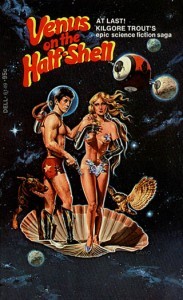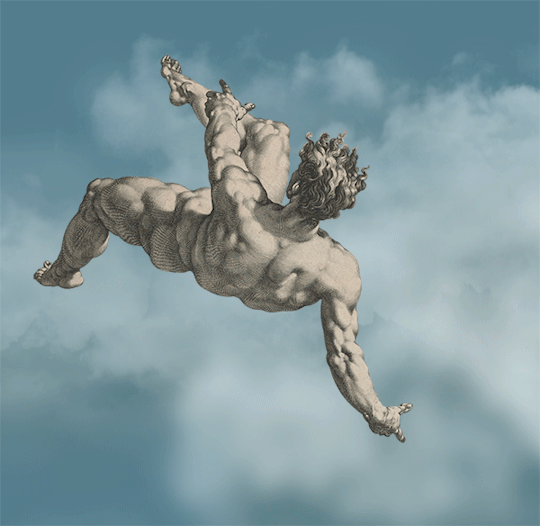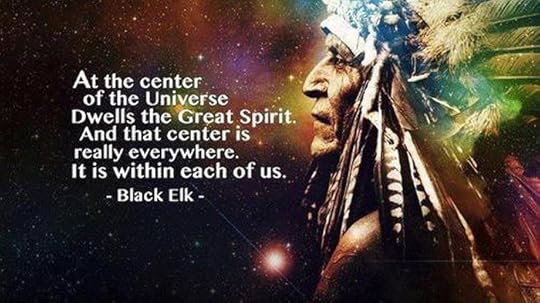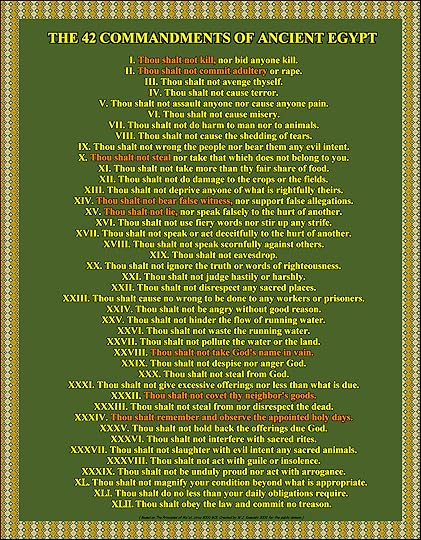Lawrence R. Spencer's Blog, page 378
November 6, 2017
BOOK COVER DESIGN CONTEST
BOOK COVER DESIGN CONTEST
ATTENTION GRAPHIC DESIGN ARTISTS!
The Order of Omega Time Travel Cult is the title of a forthcoming book, written and compiled by Lawrence R. Spencer. The book will be published in early 2012. However, this book needs to have a cover designed by a competent graphic design artist. Since I don’t have the skills to do it myself, I’m hosting a contest to solicit designs for the book cover! (tadahhh!)
What do you get out of it? The winning design will be used as the cover for the new book. The artist will receive artistic credit for the cover design in the book. And the winning artist will have the book cover and a portfolio of their work featured on this Blog.
CONTEST RULES
1) All book cover designs must incorporate, but are not limited to the use of, the following symbols:
The Greek symbol “Ω” represents to last letter of the ancient Greek alphabet, or the “end”. The symbol “∞” or the infinity symbol. This symbol means “not limited” and represents timelessness. The Greek letter Alpha, “Α” , is the first letter which represents the “first” or “beginning”. The core concept is simple: TIME HAS NO BEGINNING or END.
2) Obviously, the theme of the artwork is “time travel”. As far as I know, travelling in time is NOT a physical universe activity, Dr. Who notwithstanding. Time is simply a measure of the motion of objects or energy through space. Time is a also a subjective experience, i.e. the personal or shared observations and memories of individuals. Therefore, the artwork for the book cover must be based on the subjective experience of time for the artist.
3) Original art must be submitted as an PNG or JPG file. The artwork dimensions must be 1838 x 2775 pixels. Resolution must be at least 300 DPI.
4) All submission must be received no later than midnight, November 30th, 2011.
5) All submissions to be sent by e-mail to “Book Cover” at TOTO@OZFACTORS.COM
PLEASE NOTE: Your submission of artwork carries the explicit understanding and agreement that the use of original artwork and artistic copyrights for all book cover art submissions is granted by the artist, without restriction, to Lawrence R. Spencer.
Thank you!
Lawrence R. Spencer, author
Originally posted 2011-10-19 11:29:38. Republished by Blog Post Promoter
November 5, 2017
PURPOSE
“Life is purposeless. Don’t be shocked. The whole idea of purpose is wrong – it comes out of greed. Life is a sheer joy, a playfulness, a fun, a laughter, for no purpose at all. Life is its own end, it has no other end. The moment you understand it, you have understood what meditation is all about. It is living your life joyously, playfully, totally, and with no purpose at the end, with no purpose in view, no purpose there at all. Just like small children playing on the sea beach, collecting seashells and coloured stones – for what purpose?
There is no purpose at all.”
~ Osho ~
Originally posted 2016-05-05 17:28:24. Republished by Blog Post Promoter
DIVERS
Originally posted 2012-04-15 21:36:38. Republished by Blog Post Promoter
November 4, 2017
THE CENTER
November 2, 2017
HUMAN SYMBIOSIS
On a tiny, remote planet a Mythology has been conceived and taught that one relatively minor species of life form are “superior” to billions of others with whom they share the planet, and upon whom they depend for sustenance. Factually, all life forms exist in a perpetual state of interactive interdependency called “symbiosis”.
Symbiosis comes from two Greek words that means “with” and “living.” It describes a close relationship between two organisms from different species. It is sometimes, but not always, beneficial to both parties. Ironically, the life form that is NOT required for symbiotic survival on Earth, and without which the planet flourished for billions of years, is the species “homo sapiens”.
If insects or bacteria (two small examples) disappeared from Earth, most other species, including homo sapiens, would perish quickly. However, if homo sapiens became extinct, nearly all other life forms would flourish, and return to a natural state of symbiotic abundance upon which the fragile, parasitic species of homo sapiens depends utterly. With the exception of a few domesticated animals humans would not be missed on Earth.
It has been observed that the Microcosm (relatively small) is a reflection of the Macrocosm (relatively large) in the physical universe. Human beings conceive themselves to be the “highest” form of life and most intelligent. Yet, when viewed in the context of stars, galaxies and universes, homo sapiens are infinitesimally insignificant, except in their own minds. This begs the question: “Are their beings in the universe for whom humans might provide symbiotic value?“ The final scene from the popular film Men In Black offers one example. Do humans exist symbiotically in an existential game played by beings who we make imperceptible by our Narcissistic Mythology?
Originally posted 2015-04-25 14:42:20. Republished by Blog Post Promoter
THE UNIVERSE IS A BIG PLACE, PERHAPS THE BIGGEST

“The universe is a big place, perhaps the biggest.” (Philip Jose Farmer), “Venus on the Half Shell“

Venus on the Half-Shell is a science fiction novel by Philip José Farmer, writing pseudonymously as “Kilgore Trout,” a fictional recurring character in many of the novels of Kurt Vonnegut. This book first appeared as a lengthy fictitious “excerpt”—written by Vonnegut, but attributed to Trout—in Vonnegut’s God Bless You, Mr. Rosewater (1965). With Vonnegut’s permission, Farmer expanded the fragment into an entire standalone novel (including, as an in-joke, a scene that incorporates all of Vonnegut’s original text). Farmer’s story was first published in two parts beginning in the December 1974 issue of The Magazine of Fantasy and Science Fiction. The plot, in which Earth is destroyed by cosmic bureaucrats doing routine maintenance and the sole human survivor goes on a quest to find the “Definitive Answer to the Ultimate Question,” bears some resemblance to the later Hitchhiker’s Guide to the Galaxy series, first launched as a radio serial in 1979.
According to Farmer’s introduction in Venus on the Half-Shell and Others, Vonnegut was initially reluctant to allow the project, but finally relented. After publication, a poorly-worded magazine article gave Vonnegut the impression that Farmer had planned to write the story regardless of his permission, which angered Vonnegut. Also, it was popularly assumed that Vonnegut wrote the book. This problem was solved by the book being reprinted under Farmer’s by-line.
A common element to this novel is the origin of many of the characters’ and locations’ names. Farmer “put in a lot of references to literature and fictional authors… Most of the alien names in Venus were formed by transposing the letters of English or non-English words.”[1]
The title and paperback cover art are a reference to an Italian Renaissance tempera painting by Sandro Botticelli, The Birth of Venus, which depicts the birth of the goddess Venus as her rising from the sea on a scallop shell.
Originally posted 2012-10-22 02:08:56. Republished by Blog Post Promoter
November 1, 2017
THIRD EYE
 The third eye (also called the mind’s eye, or inner eye) is a mystical and esoteric concept referring to a speculative invisible eye which provides perception beyond ordinary sight. In certain dharmic spiritual traditions such as Hinduism, the third eye refers to the ajna, or brow, chakra.
The third eye (also called the mind’s eye, or inner eye) is a mystical and esoteric concept referring to a speculative invisible eye which provides perception beyond ordinary sight. In certain dharmic spiritual traditions such as Hinduism, the third eye refers to the ajna, or brow, chakra.
The third eye refers to the gate that leads to inner realms and spaces of higher consciousness. In New Age spirituality, the third eye often symbolizes a state of enlightenment or the evocation of mental images having deeply personal spiritual or psychological significance. The third eye is often associated with religious visions, clairvoyance, the ability to observe chakras and auras, precognition, and out-of-body experiences. People who are claimed to have the capacity to utilize their third eyes are sometimes known as seers. (Wikipedia.org)
Originally posted 2017-02-23 22:21:32. Republished by Blog Post Promoter
October 31, 2017
THE 42 COMMANDMENTS OF EGYPT
These are the allegedly the origin of the “ten commandments” attributed to Moses in the Old Testament of the bible. This may be evidence of plagiary on the part of the Jews, who were slaves in Egypt for many, many years before Moses (who lived in the house of Pharaoh) arranged their escape. It seems logical that Moses would teach his “children” the basic rules of morality he learned in as a member of the aristocracy in Egypt. These “42 Commandements of Egypt”, as MUCH more benevolent and egalitarian than the Hebrews ever imagined. (click image to enlarge)
Originally posted 2016-10-23 21:41:51. Republished by Blog Post Promoter
IT’S THE SAME UP HERE
CHARLES DICKENS AND WHY I LOVE AUDIO BOOKS
 This is my recent review of the audio book David Copperfield, written by Charles Dickens and performed by Mr. Simon Vance:
This is my recent review of the audio book David Copperfield, written by Charles Dickens and performed by Mr. Simon Vance:
“Charles Dickens defines the English language in application to the environs and inhabitants of his contemporary life with perfect eloquence and poignant emotion. David Copperfield, the novel, describes and embodies England and the English language at the pinnacle of its cultural power in the mid 1800s.
The narrative performance of this audio book by Mr. Simon Vance, of the myriad characterizations of persons and scenarios described or diverse diatribes of conversation conducted therein, cannot have been exceeded by the most eloquent thespian on any Shakespearean stage! Bravo, Bravo, Bravo Sir!
If you consider yourself a proponent of the English language this audio book is essential to sustaining your use of it and of expanding your appreciation of it mastery.
The delimitation of “rating” this book to “5 Stars” is a desecration of the monument and memory of Charles Dickens which shines eternally in The Heavens of Literature.”
You can download a copy of this book FREE HERE:
https://www.audible.com/pd/Classics/David-Copperfield-Audiobook/B002V8LEW2
from Wikipedia:
Charles John Huffam Dickens (7 February 1812 – 9 June 1870) was an English writer and social critic. He created some of the world’s best-known fictional characters and is regarded by many as the greatest novelist of the Victorian era.[1] His works enjoyed unprecedented popularity during his lifetime, and by the 20th century critics and scholars had recognised him as a literary genius. His novels and short stories enjoy lasting popularity.[2][3]
Born in Portsmouth, Dickens left school to work in a factory when his father was incarcerated in a debtors’ prison. Despite his lack of formal education, he edited a weekly journal for 20 years, wrote 15 novels, five novellas, hundreds of short stories and non-fiction articles, lectured and performed extensively, was an indefatigable letter writer, and campaigned vigorously for children’s rights, education, and other social reforms.
Dickens’s literary success began with the 1836 serial publication of The Pickwick Papers. Within a few years he had become an international literary celebrity, famous for his humour, satire, and keen observation of character and society. His novels, most published in monthly or weekly instalments, pioneered the serial publication of narrative fiction, which became the dominant Victorian mode for novel publication.[4][5] The instalment format allowed Dickens to evaluate his audience’s reaction, and he often modified his plot and character development based on such feedback.[5] For example, when his wife’s chiropodist expressed distress at the way Miss Mowcher in David Copperfield seemed to reflect her disabilities, Dickens improved the character with positive features.[6] His plots were carefully constructed, and he often wove elements from topical events into his narratives.[7] Masses of the illiterate poor chipped in ha’pennies to have each new monthly episode read to them, opening up and inspiring a new class of readers.[8]
Dickens was regarded as the literary colossus of his age.[9] His 1843 novella, A Christmas Carol, remains popular and continues to inspire adaptations in every artistic genre. Oliver Twist and Great Expectations are also frequently adapted, and, like many of his novels, evoke images of early Victorian London. His 1859 novel, A Tale of Two Cities, set in London and Paris, is his best-known work of historical fiction. Dickens has been praised by fellow writers—from Leo Tolstoy to George Orwell and G. K. Chesterton—for his realism, comedy, prose style, unique characterisations, and social criticism. On the other hand, Oscar Wilde, Henry James, and Virginia Woolf complained of a lack of psychological depth, loose writing, and a vein of saccharine sentimentalism. The term Dickensian is used to describe something that is reminiscent of Dickens and his writings, such as poor social conditions or comically repulsive characters.[10]









